I’m going to kick things off by guiding you through Kayak for Pet: How to Choose the Right One the process of getting your dog kayak-ready.
This isn’t just about finding a kayak that fits; it’s also about ensuring your furry companion is prepared for the experience.
Assessing Comfort and Safety in Water
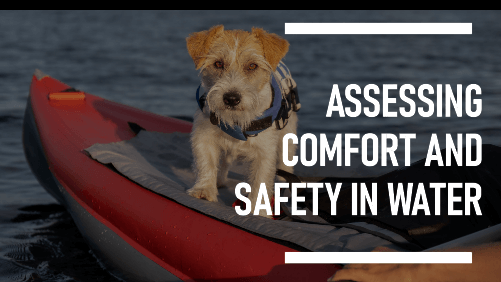
Your furry pal’s readiness is paramount. Start by assessing their comfort with water. Some dogs take to water like a duck, while others might be more hesitant.
Swimming ability matters too; not all dogs are natural swimmers. And let’s not forget the lifejacket – yes, dogs need them too! A properly fitted PFD (personal flotation device) can be a lifesaver.
Acclimating Your Pet to the Kayak

Next, you’re going to find out about acclimating your pet to your kayak.
Introduce them to the kayak on dry land first, allowing them to sniff and explore it at their own pace. Then, associate the kayak with positive things – think treats and praise – to help your dog form a positive impression.
Training Commands for Kayaking with Dogs
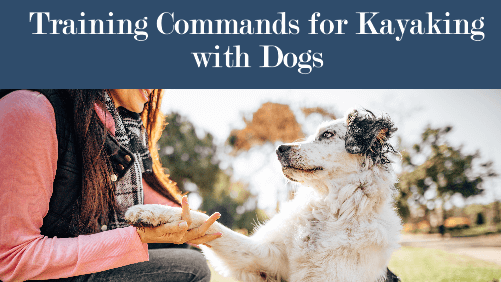
Training your dog with simple, clear commands is crucial for kayaking success. I’m here to help you navigate through this by establishing commands such as ‘Get in your spot,’ which directs your dog to their designated area in the kayak, ensuring they’re not underfoot as you paddle.
Transitioning to the Water: Entry and Exit Tips

Now, after you’ve covered the basics of training and readiness, it’s time to discuss transitioning to the water.
In the following section, we’ll delve into the tips for safe entry and exit – because no matter how well you prepare, getting in and out of the kayak smoothly is a skill all unto itself.
Embarking with Ease: Mastering Safe Kayak Entry and Exit Techniques
I’m going to show you how to master the art of getting in and out of a kayak with your pet, without any of the circus-like theatrics that can often accompany the process.
Safe and smooth entry and exit are crucial for the comfort and security of both you and your furry friend, whether you’re approaching from a sandy beach or stepping off a dock.
Beach Entries and Exits: A Step-by-Step Guide
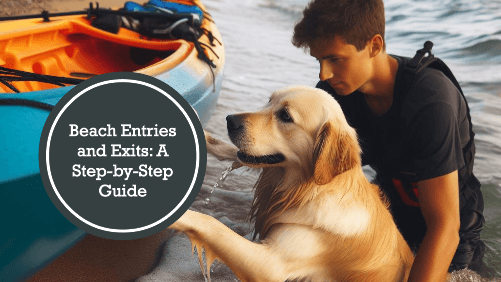
So let’s tackle the different approaches, starting with beach entries.
- If you’re using a sit-on-top kayak, guide your dog onto the vessel before you climb in, ensuring they’re seated and stable.
- For sit-inside models, it’s often easier to get in first and then help your dog onboard, aiming for a position where they can sit or lie down comfortably without affecting your kayak’s balance.
Beach exits are just the reverse.
- For sit-on-tops, you’ll want to disembark first and then assist your dog out.
- With sit-inside kayaks, guide your dog to exit before you clamber out yourself—this helps to avoid any tipping as you exit the craft.
Dock Entries and Exits: Navigating the Challenges

What about dock entries and exits? These can be a bit trickier. The key is to keep the kayak close to the dock while preventing it from drifting away.
You might want to secure your kayak with a line for additional stability. Once steady, lower your dog into their spot, and then carefully follow.
Always prioritize your pet’s entry and exit – this provides them a sense of security and prevents any sudden movements that could send you both for an unintended dip.
Practice Makes Perfect: Rehearsing for Smooth Sailing

Admittedly, this isn’t just about technique; it’s also about regular practice. Consistency and patience here will pay off, so make sure to rehearse this part of your kayaking regimen just as much as paddling itself.
Preparing for the Unexpected: Training for Surprises
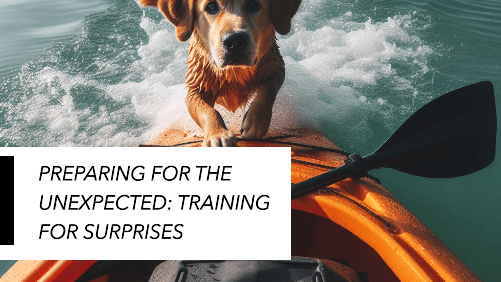
As you prepare for step three, the focus shifts from the practical how-to’s of entering and exiting your kayak to exploring what to do when things don’t go as planned.
Even the best-trained dogs might make unexpected moves, so stay with me—I’m here to help you prepare for any potential surprises on the water.
Paddling Through Peril: Emergency Protocols for You and Your Pet

You’re out on the water, the sun on your face, your dog perched contentedly in your kayak; it’s a picture of serenity.
But what happens when things don’t go as planned? I’m here to help you with both the expected and the unexpected.
When Your Dog Goes Overboard: Keeping Calm and Safe
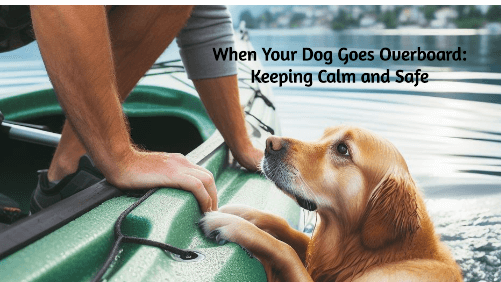
If your dog jumps ship, it’s crucial not to panic. Keep a close eye on them, call out calmly, and paddle over without splashing too much, as this could startle them.
Once you’re close, use a command like ‘Come’ to encourage them to swim to you or the kayak. When they reach you, help them aboard by lifting from underneath their torso if they’re small, or guide them to a platform or shallow area where they can reboard themselves if they’re larger.
Capsizing with Care: Securing Safety for Both
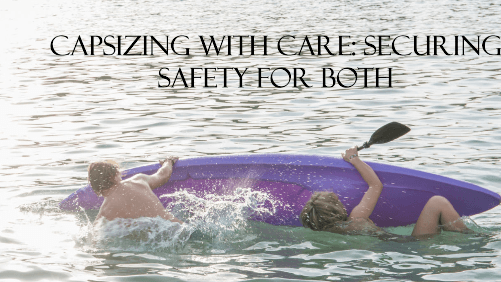
In case you tip over, remember, safety first: Secure your own lifejacket and make sure you’re safe before assisting your dog.
Once you’re ready, talk to your dog in a soothing tone to keep them calm. Then, locate the safest area to flip the kayak back over.
A flipped kayak can be a bit intimidating, but with enough practice, you’ll be flipping it back like a pro. Just avoid doing it onto your dog, obviously!
Training for Trouble: Commands and Canine First-Aid
Nobody expects to have an emergency, but being prepared can be a real lifesaver. Incorporate command training into your routine so that your dog knows how to behave in these situations.
Use commands like ‘Stay’ to prevent them from making the situation more chaotic. It can be beneficial to take canine first-aid courses to ensure you’re ready to handle any injuries your furry friend might sustain on the water.
Effective Communication: The Key to Kayaking with Pets
In the end, communication with your dog is key. Whether it’s teaching them a new command or guiding them back to safety, your ability to effectively communicate will determine how successful and safe your excursions will be.
This preparation and command work sets you up perfectly for the next step: making sure you’ve got the right gear and supplies for a perfect paddling trip.
Choosing the Best Vessel: Top Dog-Friendly Kayaks Reviewed
I’m here to help you wrap up your search for the ideal kayak to share with your furry friend. You want something that resonates with you and your pet’s lifestyle, and I’ve got just the insights you need.
Solo Kayaking: The AdvancedFrame Expedition Elite Kayak
When it comes to solo kayaking with your pet, the AdvancedFrame Expedition Elite Kayak is a standout choice.
It’s got the stability you desire and an open design that will keep your dog contained and comfortable. The AdvancedFrame Kayak follows closely, offering a balance of size and durability that’s hard to beat.
Tandem Adventures: The AdvancedFrame Convertible Elite Kayak
Now what about tandem kayaking? If you’re one to enjoy water adventures with a companion and your pet, the AdvancedFrame Convertible Elite Kayak is your go-to option.
Prefer inflatables? The AirVolution2 Kayak and StraitEdge2 Pro Kayak offer versatility and space for everyone along for the paddle.
Making the Final Selection: Creating Memorable Experiences
Your final selection should ultimately support your unique kayaking needs and preferences.
Remember, it’s not just about the kayak; it’s about creating memorable experiences with your pet. So, choose something that keeps you both happy, safe, and ready to explore.
Confidence in Your Choice: Adjusting as You Go
I really hope that you feel more confident in picking out a kayak that’s just as adventurous as your four-legged pal.
Don’t worry too much about getting it perfect on the first try. You can always adjust your approach down the road. After all, your first attempt doesn’t need to be your last. Paddle on, my friends!
